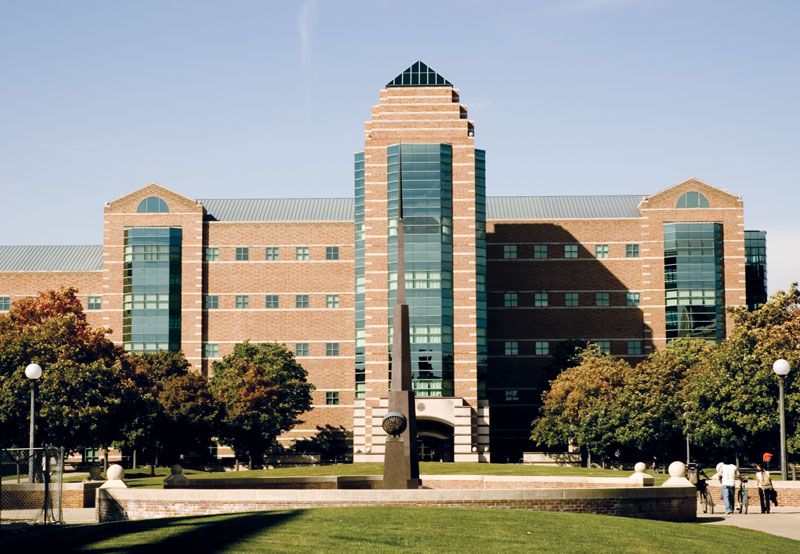Illinois Public Universities Confront Deep Budget Crisis Amid Rising Tuition Pressures
Rising Costs and Dwindling Support
Since 2010, state funding for public universities in Illinois has plunged dramatically—dropping by roughly one-third. Illinois State University (ISU) alone has seen its funding fall to $80 million annually, triggering a nearly $1,200 hike in in-state tuition and a staggering $12 million budget shortfall this academic year ilga.gov+9illinoispolicy.org+9nprillinois.org+9.
To manage the gap, ISU has paused raises for faculty and staff, canceled departmental budgets for research and travel, and postponed critical infrastructure updates. As President Aondover Tarhule remarked, many on campus “never believed this could happen to us,” highlighting the unexpected severity of the crisis ibhe.org.
Who Is Most Affected
Public universities in Illinois serve a high volume of low-income, first-generation, and students of color. For example:
Chicago State University’s student body is roughly 78% African American.
Northeastern Illinois University is recognized as a Hispanic-Serving Institution, with diverse communities making up two-thirds of its enrollment .
The lack of state investment undermines these institutions' ability to support students—especially those who are most vulnerable. As Robin Steans of Advance Illinois notes, "kids are likely to stay and work where they go to school” chicagobusiness.com+4capitolnewsillinois.com+4nprillinois.org+4.
Outdated Funding Model Hindered Equity
Illinois has long relied on a politicized, ad‑hoc funding system. Individual universities would lobby legislators for allocations, but those with less influence—often institutions serving disadvantaged communities—lost out capitolnewsillinois.com+1myjournalcourier.com+1.
In contrast, K–12 funding shifted to an evidence-based model in 2017, prioritizing districts with greater needs. Advocacy groups are pushing for a similar methodology for higher education to ensure fairness and targeted investment .
The Funding Reform Proposal
A new legislative effort—the Adequate & Equitable Public University Funding Act—aims to overhaul the system. Based on findings from the Commission on Equitable Funding, it establishes:
Adequacy targets: funding levels needed to meet each institution’s mission and student needs
Resource profiling: comparing available vs. required resources per school
Equity-driven allocation: prioritizing underfunded campuses with higher support for students from underserved backgrounds ibjonline.com+12ibhe.org+12ilga.gov+12aol.com+10sheeo.org+10nprillinois.org+10
This formula would bring an additional $1.7 billion over 10–15 years—about $135 million annually—potentially adding 45,000 new graduates to the workforce .
Flagship Campuses Push Back
The University of Illinois (U of I) system—comprising Urbana-Champaign, Chicago, and Springfield—educates more than half of the state’s public university students, including a significant proportion of those on Pell Grants capitolnewsillinois.com+2capitolnewsillinois.com+2myjournalcourier.com+2.
However, under the proposed formula, U of I would receive only 28% of new funding and absorb 74% of future budget cuts, despite educating 53% of public university students transformhigheredil.org+2capitolnewsillinois.com+2myjournalcourier.com+2.
Nick Jones, from the U of I system, warns that the model could penalize flagship campuses and urges a tiered, mission-aligned alternative that respects the distinct roles and achievements of each institution capitolnewsillinois.com+1myjournalcourier.com+1.
The Consequences of Underfunding
Between 2002 and present, state support for public universities declined from covering 72% of operating budgets to just 35%, forcing average tuition to climb to nearly $15,000 by 2023 .
Compounding the issue: pensions now consume 43 cents of every education dollar, crowding out funds for teaching and facilities illinoispolicy.org+1chicagocontrarian.com+1.
Enrollment has fallen by around 18% over two decades, with some campuses—like Northeastern, Eastern, and Western—losing half their students. Yet, institutions like UIUC, UIC, and ISU have seen modest gains .
Small Towns Feel the Impact
The economic ripple effects have hit college towns hard. Macomb, home to Western Illinois University, has lost 47% of its enrollment since 2010, causing dorm closures, staff layoffs, and local business decline. Now dorms are being demolished, and infrastructure is deteriorating wsj.com.
Scholarships Fill Some Gaps
Faced with soaring costs, Illinois State University has bolstered its scholarship fund—growing it from $25 million in 2017 to $64 million today—to make in-state attendance more affordable .
Other universities have followed suit, emphasizing "last dollar" aid to complement Pell and MAP grants. Still, students often shoulder $3,000–5,000 annually out of pocket—or go into debt .
Reform Hangs in the Balance
Although SB13 (and its House companion, HB1581) enjoys backing from nine out of twelve campuses, opposition from the U of I system stalled the bill in the legislature this spring capitolnewsillinois.com+3capitolnewsillinois.com+3myjournalcourier.com+3.
Supporters argue that the funding model is incremental, ensures no university loses money, and begins with more investment in schools starting from further behind ibhe.org+5transformhigheredil.org+5myjournalcourier.com+5.
A Critical Turning Point for Illinois
Stakeholders emphasize that only systemic reform can reverse decades of underinvestment. As Tarhule notes: “You need more than one strong, financially thriving institution in a state as big as Illinois… the bill is not perfect, but infinitely better than where we are now” ibhe.org.
Looking Ahead
With the state grappling with a $3.2 billion deficit and federal funding uncertain, public university funding faces stiff competition in the fiscal year 2026 budget myjournalcourier.com.
Despite lawmakers maintaining a 1% increase for higher education, advocates argue that deeper changes are essential. Without them, students—especially from marginalized communities—may continue to be priced out and leave the state.
